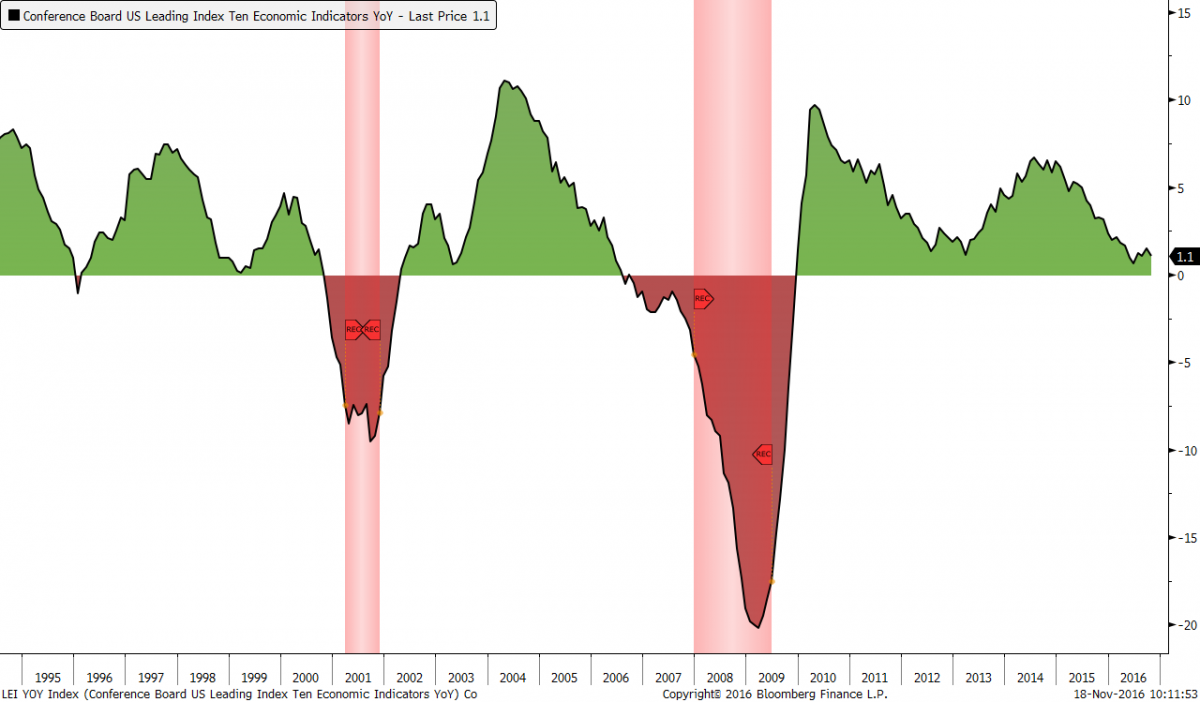The latest data for the Conference Board US Leading Economic Index (LEI) came out today and appears to indicate that there is still no imminent risk of recession with forward-looking indicators showing positive, though weak, growth.
If we assume that the Conference Board US LEI continues to weaken from its current 1.1% year-over-year growth rate, historically speaking the average time it takes before we see a recession is 9 months, which would put us on track for August 2017, ranging from as short as 3 months (February 2017) to as long as 18 months (May 2018).
Under a more optimistic scenario, assuming perhaps that Trump's pro-growth policies are successful, then, looking at the data above, a US recession could be delayed for at least another 2 years, putting us on track for a US recession in the 2018-2019 timeframe.
Historically speaking, this is the less likely scenario since large fiscal spending programs are almost always enacted after a recession has already started, as Chris Puplava recently pointed out in Fiscal Spending: Crystal Balls and Magic Wands.
Looking at the US budget deficit as a percent of GDP however, revenues have begun to peak in a pattern consistent with the onset of prior recessions and suggest we may only be months away from such an event. If this pattern plays out as it has in the past, a US recession may be the first thing to greet Trump in office.









